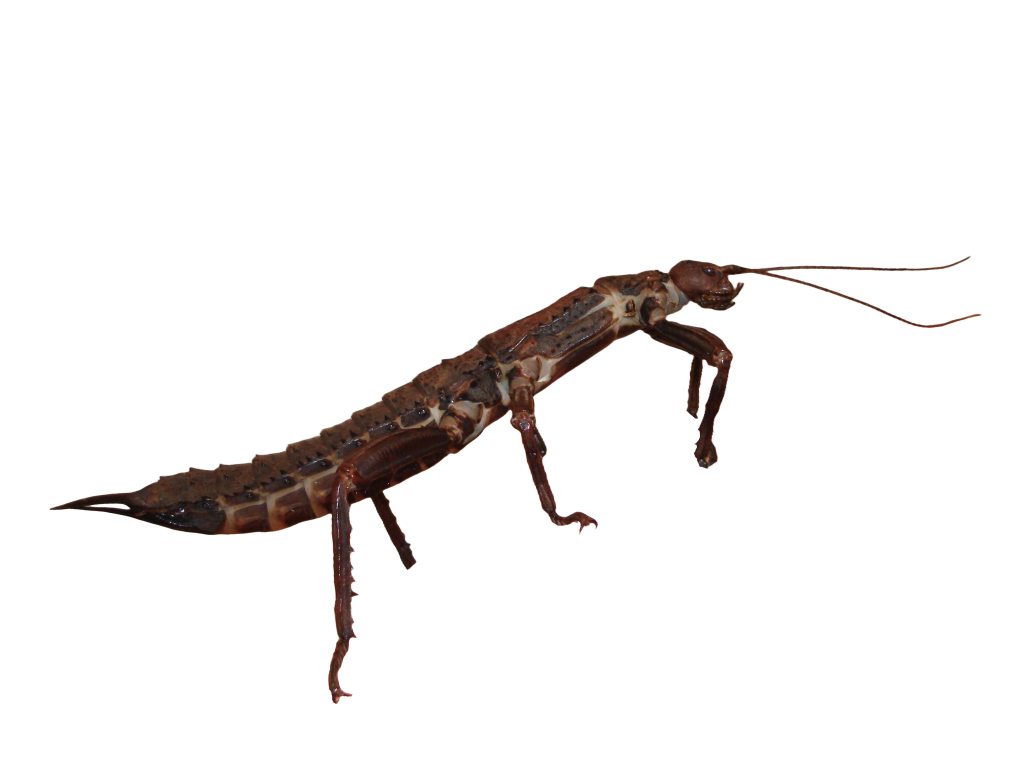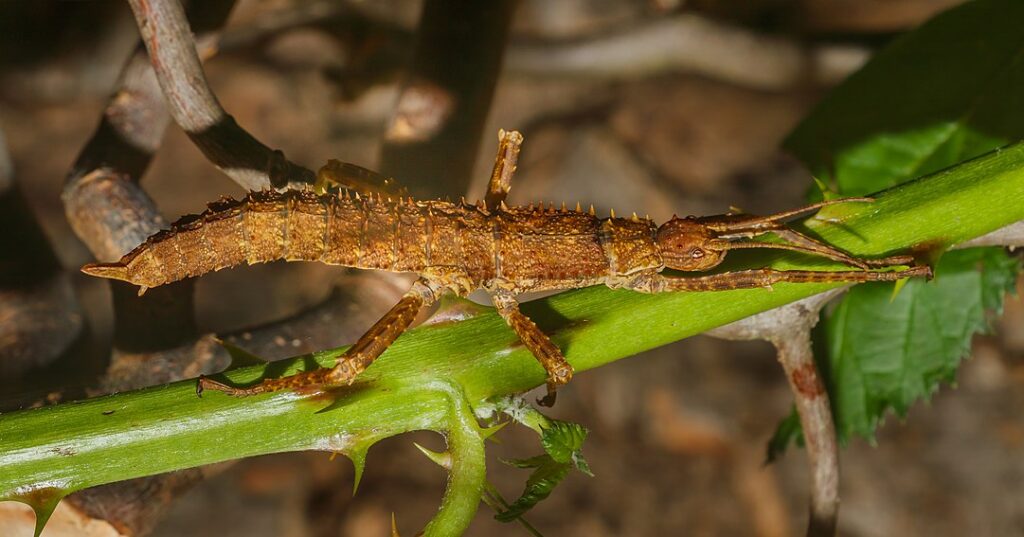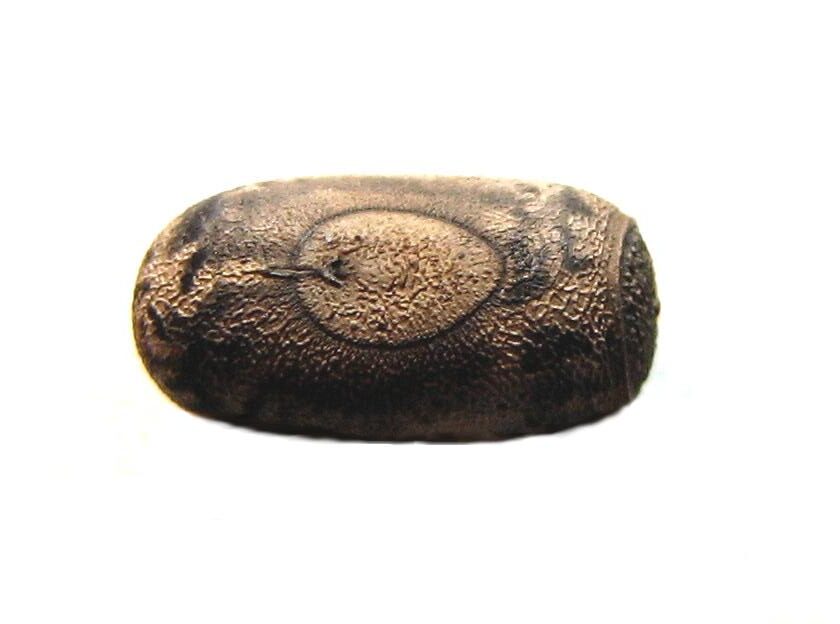Thorny devil stick insect

Unusual way of life for a stick insect
In tropical rainforests on islands in Oceania, the thorny devil stick insect lives. The species belongs to an order of insects commonly known as sticks insects, but the thorny devil stick insect resembles more of a thick, rotting branch than a long, slender stick. The species is dark brown in colour, and unlike most other species of stick insects, it lives much of its life on the ground. There, the dark colour is a fitting camouflage. During the day, the thorny devil stick insect like to hide under bark and leaves on the ground.

Photo: H.-Zell-CC-BY-SA
Does not need males to reproduce
There are both males and females of the thorny devil stick insect, but if there are no males, this is not a problem for reproduction. The females can, as for many other species of stick insects, lay eggs that she has fertilised herself! But if there are males, the species will have a better genetic variation. An egg from a thorny devil stick insect can take anywhere from 3 months to half a year to hatch. The young of stick insects are called nymphs, and they grow by regularly shedding their shells. After about 5-6 molts, the thorny devil stick insect is fully grown.

Photo: Dragus-CC-BY-SA
Thorns sharp as fishing hooks
Males of the thorny devil stick insect are smaller than the females, but much more aggressive. On its hind legs, the male has a long, curved, and sharp thorn, which is used as a defence. The thorn has actually been used by people in New Guinea as a fishing hook. When a male of the thorny devil stick insect feels threatened, he stands up on his front legs and shows the thorns on his hind legs. He can sometimes give off a foul smell.
Distribution worldwide
New Guinea, New Caledonia and Solomon Islands.

Threat based on the Red List

Trade regulations
CITES: Not listed.